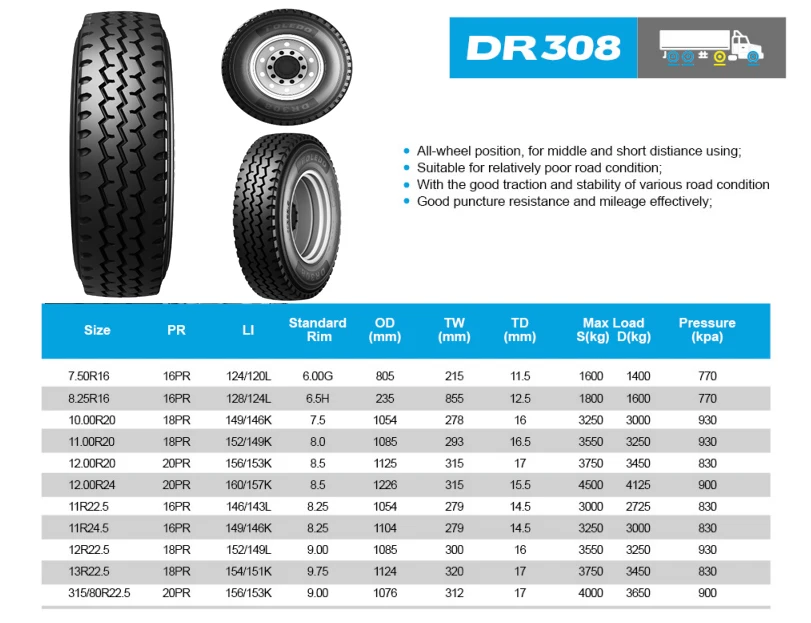Having the correct semi-truck or 18-wheeler tire size is vital in the operation of any size fleet of trucks. Properly operating tires impact the bottom line regarding the amount of time the trucks can be on the road and the safety of your operators and others on the road. Having the wrong semi-truck tire size can mean that general wear and tear happens faster. The size matters when understanding how the placement of each tire. More maintenance or less time on the road means your payload is not being delivered.
Over the last few years, the most common truck tire sizes include but are not limited to 295/75R22.5, 275/70R22.5, and 225/70R19.5. While these cover average truck tire sizes and the list is good information to have, it is not ultimately helpful if you don’t understand what these numbers mean to you and your truck/s.
If we take that first size, 295/75R22.5 and explain how semi-truck tires are sized, those numbers break down into several informative categories.
Tire Width - The first number in the series denotes the tire width. Semi-truck tire width can be displayed in terms of inches or millimeters. In this case, a 295-inch wide tire would be massive, so a quick assumption can be made that this is a millimeter marking. Having the correct semi tire width is vital as it is literally where the rubber meets the road.
Aspect Ratio - The second notation (75) after the slash mark is the aspect ratio. It represents the percentage of the length of height to width. This number is an important sizing calculation in tire fitting, and along with rim diameter will help you determine your best tire and wheel combinations.
Tire Construction Type - In this example, the letter R stands for radial (this notates that the steel belts inside are running 90-degrees from the direction the tire is facing). If you see a dash, then the tire is bias-ply (this notates that the nylon belts running anywhere from 30 to 45-degrees from the direction the tire is facing).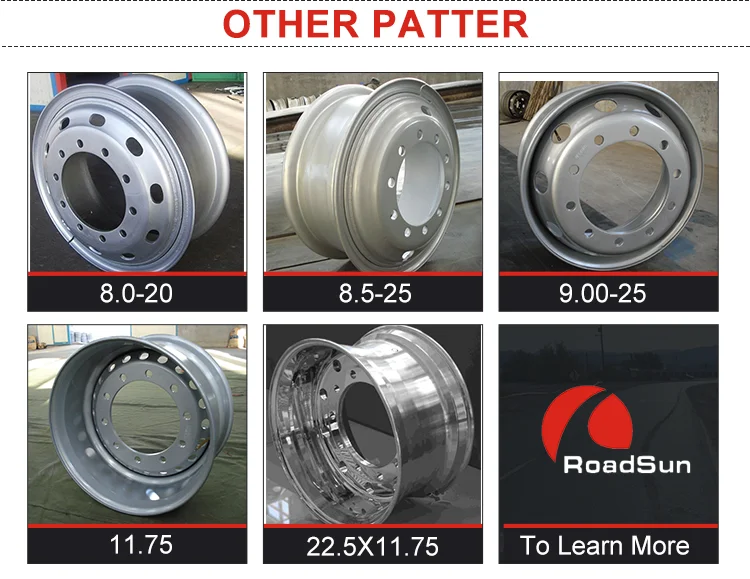 Much less common are B for bias belt and D for diagonal.
Much less common are B for bias belt and D for diagonal.
Rim Diameter - The following number, in this case, 22.5, is the diameter. This does not apply to the diameter of the whole tire, but rather the semi-truck wheel diameter (the hole in the center of the tire). You would need a 22.5-inch wheel to fit this tire.
When reading the sidewall, you will encounter two additional numbers.
Load index - This number will indicate how much weight or load carrying capacity a single tire can hold. For example, 89 = 1,279 pounds, while 88 = 1,235 pounds.
Speed rating - You will see a speed rating letter at the end of the string. This indicates how fast the tire can go under its maximum load. A tire can go faster than this number at a lower load, but typically the tires can withstand a higher speed than the speed limits you will encounter.
No matter the size of your fleet or the needs that your trucks meet, we have the right tires for you.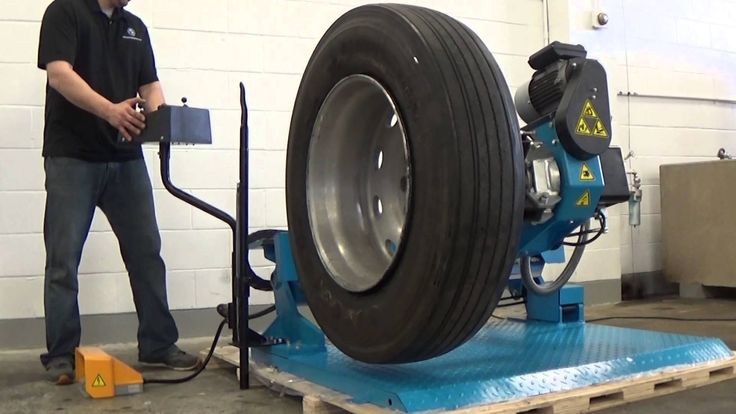 Whether you are looking for steer tires, drive tires, trailer tires or all position tires, we can outfit every wheel position of your commercial truck. Whether you’re looking for a top-tier fuel-efficient tire or a more economical option, we carry a wide variety of brands and semi-truck tire sizes, and we can get you and your truck back on the road quickly.
Whether you are looking for steer tires, drive tires, trailer tires or all position tires, we can outfit every wheel position of your commercial truck. Whether you’re looking for a top-tier fuel-efficient tire or a more economical option, we carry a wide variety of brands and semi-truck tire sizes, and we can get you and your truck back on the road quickly.
FIND A GCR DEALER NEAR YOU
You can't go a single day on the road without seeing semi-trucks. They're an integral part in the world of logistics, so they're certainly a common sight. One thing you can't help but notice about these vehicles is their tires. Exactly how big are they? We have researched semi-truck tires and have the answers for you.
There are several standard sizes of semi-truck tires currently used, but some of the most popular sizes include:
These are tires with widths of 225 mm-295 mm. They also have a height to width ratio, also known as an aspect ratio of 70-75, and a rim diameter of 19.5-22.5 inches.
They also have a height to width ratio, also known as an aspect ratio of 70-75, and a rim diameter of 19.5-22.5 inches.
Before you continue reading, let us say we hope you find the links here useful. If you purchase something through a link on this page, we may get a commission, so thank you!
This article will discuss how big semi-truck tires are and how to read a semi-truck tire's size. We will also learn about other semi-truck tires related questions. Keep reading to learn more.
Semi-truck tires are a bit larger than standard car tires. A typical size for a car tire would be a size like 235/40R18, which has a tire width of 235 mm. A semi-truck tire typically has a size around 225/70R19.5 and 295/75R22.5, which has a tire width between 225-295 mm.
Also, the car tire has an aspect ratio of 40, which means that the tire, from the rim to the tread, is 40 percent the length of the tire's width. The larger aspect ratio on a semi-truck tire makes it taller.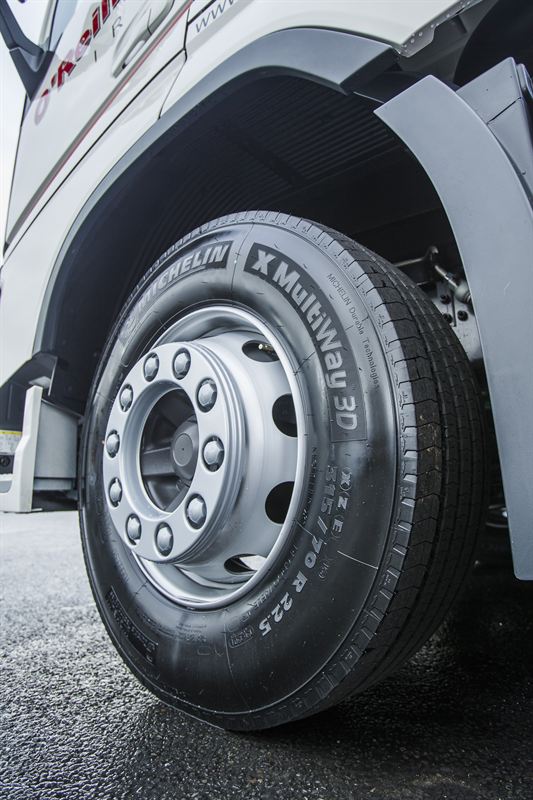 A semi-truck tire's rim diameter is larger than the 18-inch diameter on the car's tire.
A semi-truck tire's rim diameter is larger than the 18-inch diameter on the car's tire.
Overall this makes semi-truck tires bigger than standard car tires. This makes sense when you think about how much more weight a semi-truck tire has to carry. Also, semi-trucks drive for longer hours than a typical residential vehicle. The additional weight the truck has to carry in addition to the long driving hours puts a lot more wear on the tires, so they need to withstand that.
When you read the tire size on a semi-truck tire, you will see some numbers and letters arranged like this: 225/70R19.5.
On GCR Tires, they break down the four main parts of a semi-truck tire's size.
The first number from our example is '225.' This is the tire's width in millimeters. This is the number that the next section references to understand tire height.
The height of the tire isn't just listed like the width.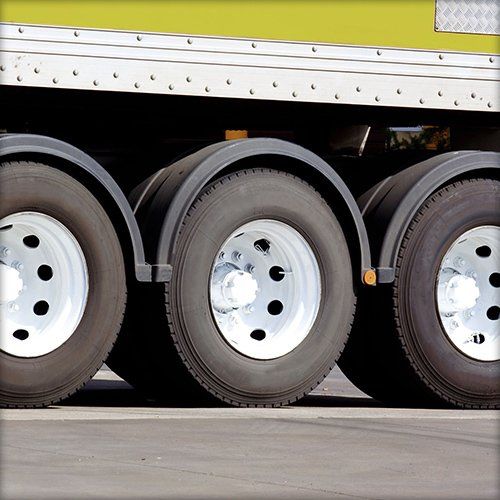 Instead, it is written as a ratio of the width of the tire. So in the example, after the slash is '70.' This means that the tire's height, from the rim to the edge of the treads, is 70 percent of the tire's width.
Instead, it is written as a ratio of the width of the tire. So in the example, after the slash is '70.' This means that the tire's height, from the rim to the edge of the treads, is 70 percent of the tire's width.
The letter after the number '70' in our example is 'R.' This lets us know that the type of tire is radial. This means that the tire is supported with steel belts that run radial inside the tire. There are other types, but radial is the most common for truck tires.
The rim diameter is the diameter of the center of the tire. This lets you know what size rim wheels fit inside this tire. In the example, it would be the '19.5' at the end. This indicates that the rim diameter is 19.5 inches across.
Semi-truck tires are big to allow for more traction and stability while driving. Semi-trucks can move thousands of pounds of cargo across thousands of miles. It can be crucial that the tires on them are up for such a long job.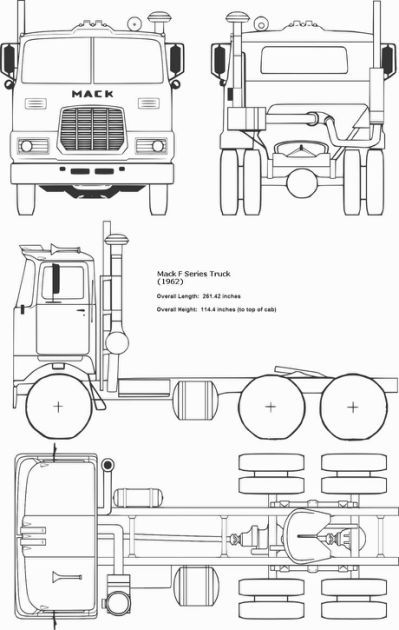
Wider tires help to distribute the weight across more surface area, while taller tires mean the tires can rotate less and cover more distance. Also, with more rubber between the road and the truck, there is more material to use up over time. This will improve the time between tire replacements.
When you are choosing tires for your semi-truck, it is good to know what your options are. You will want to read your truck's owner manual to see what tires it recommends in different situations. In some cases, your vehicle may need different tires than in another situation.

Be sure to choose the right tire for the right vehicle and situation. You will want larger treads for off-roading than a long drive across Kansas.
Lube Zone says that semi-truck tires have a life span of three to six years. It is recommended that you change your tires no less often than every six years. If the tire has more wear or damage, then it may need to be replaced sooner, like three years.
One more thing to know when changing semi-truck tires is about changing them in pairs. When you change a semi-truck's tires, you want to change the opposite side tire as well.
When the treads on two adjacent tires are uneven, it can cause issues when you drive. This is why it is recommended to change all of your semi-truck tires in pairs.
Steer tires are the tires in the front of a vehicle that are used to steer. They are designed a little differently than other tires to optimize their position on the vehicle.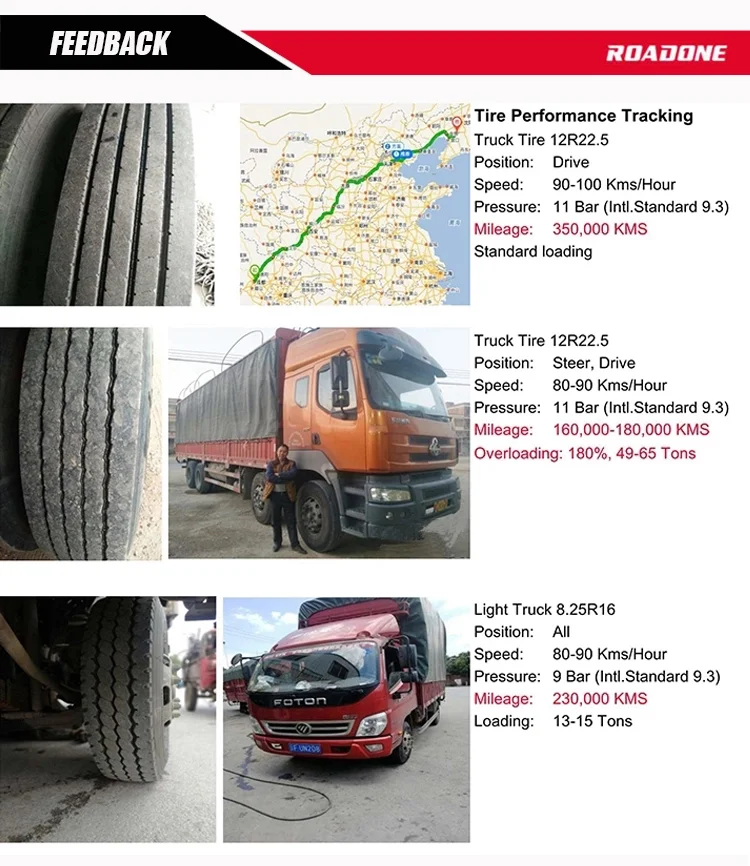 Since they are in the front and used to steer, they are designed to have lots of traction to control the vehicle better.
Since they are in the front and used to steer, they are designed to have lots of traction to control the vehicle better.
These tires also tend to be built stronger than other tires since turning your vehicle wears them out. By having higher endurance, they can help the tires in the front and back wear more evenly.
On a semi-truck, there are two other tires we will also talk about.
A drive tire is usually located just behind the steer tire on a semi-truck. These are the tires that are hooked to the drive train and push the vehicle forwards.
To help increase traction with the road, these tires have stronger treads. Since the truck's power is based on how hard the truck can push off the road, the tires have to have a lot of traction.
If you tried to use a different tire where the drive tire was supposed to go, your vehicle wouldn't be able to grip the road. This would result in less available power for the semi-truck. Drive tires can be essential to maintaining efficient trucks.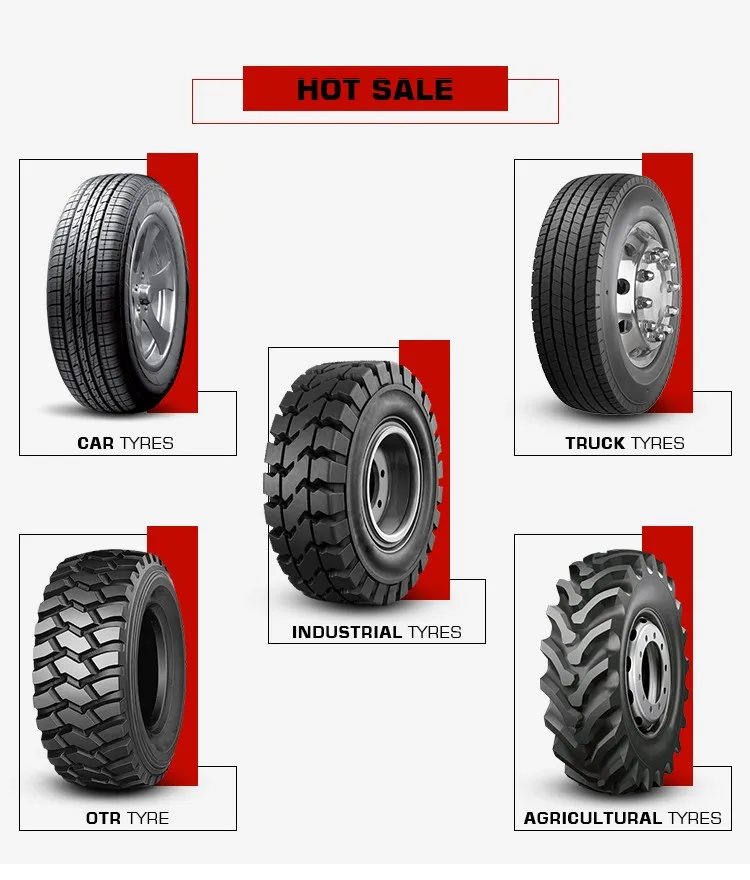
A trailer tire is a tire that is usually located at the back of a semi truck's trailer. These tires don't receive power from the drive train and also don't help in steering. For this reason, they don't need to have as strong of treads. The forces on these tires are greatly lower than their counterparts.
When you are installing steer tires, it is a good practice to make sure that they match. When your vehicle has different size steer tires, then the vehicle will handle incorrectly. You may notice that you slide when you shouldn't or don't turn correctly. So make sure that your steer tires match.
Now, what if you are in a situation where you have no choice but to use mismatched steers tires temporarily. How much damage will this cause to your vehicle? Overall this won't do any severe damage to the vehicle but, it does reduce the vehicle's handling. If you must drive without matching steer tires, go slower to help keep yourself safe.
Semi-truck tires, like most tires, are made from a blend of natural and synthetic rubber. This rubber is layered in different configurations depending on the specific tire.
Semi-truck tires are built with lots of hard rubber layers to make the tires extra resilient. On the other hand, standard car tires are also made with layers of rubber, but the rubber they use is not nearly as dense. They also don't use as many layers.
There are also other special layers they can add to a semi-truck's tires to improve performance. One of these things is a polyester layer that helps to prevent the tire from overheating. It also adds a layer of rigidity to help the tire hold its shape.
In this article, we learned how big semi-truck tires are and how to read their size. We also learned that semi-truck tires are big to increase traction and stability. Also, larger tires last longer since they have more rubber.
Next, we covered the different types of tires and how it's essential to keep your drive tires and steer tires in the correct location.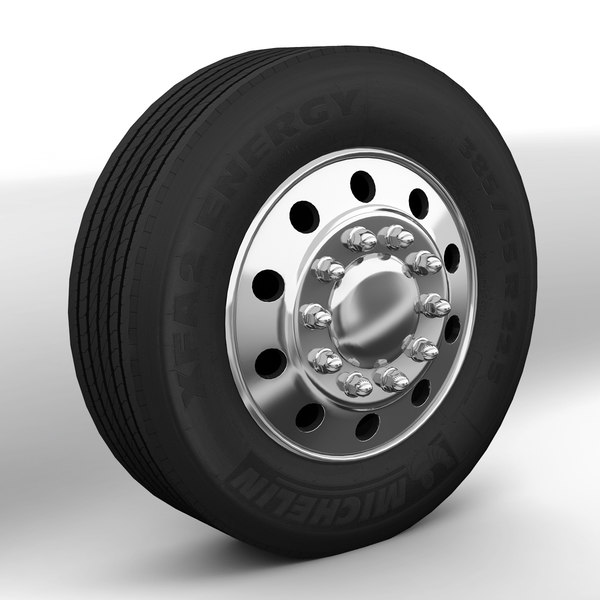 Finally, we learned that tires are made from different rubber layers of varying densities. The density affects how well the tire will endure. Semi-truck tires are usually denser.
Finally, we learned that tires are made from different rubber layers of varying densities. The density affects how well the tire will endure. Semi-truck tires are usually denser.
We hope you enjoyed this article. If you would like to learn more, check out these other posts.
How Many Miles Does A Semi Truck Last?
Should Good Tires be On Front Or Back?
Main page — News — Articles — Buying tires and wheels for a semi-trailer: what to choose?
Stable and durable tires are a guarantee of safety for the driver and cargo. They have the maximum load, especially when driving off-road. As a result, not only the wheels suffer, but also the suspension of the vehicle. This, in turn, affects its lifespan. In the article you will learn more information about tires and wheels for semi-trailers, about the features of their choice.
It is necessary to select such an important element as tires, taking into account the purpose of operation and the quality of the roads along which the car moves.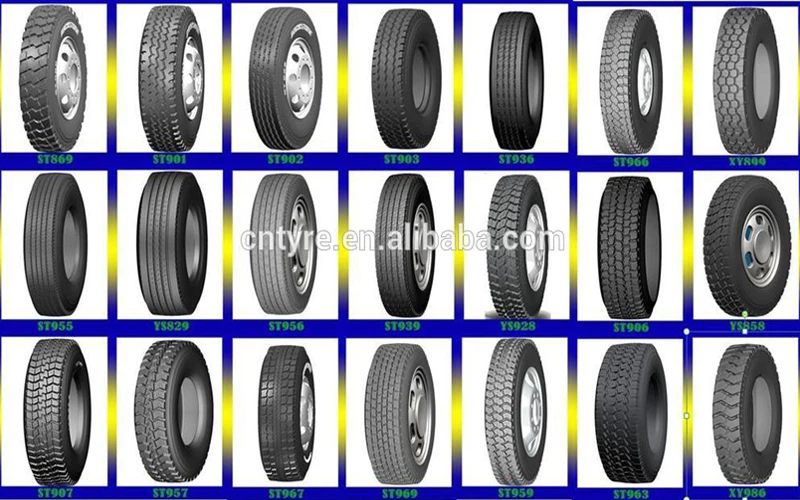
According to the type of tread, tires are divided into the following types:
When buying tires for a semi-trailer, technical requirements must be taken into account. For example, it is not allowed to install tires on the same axle that have different treads and patterns.
According to the profile of the tire are divided into:
The size of the wheels in the semi-trailer, towing vehicle must be the same. So it turns out that the mass of the load will be distributed as evenly as possible.
When choosing tires for semi-trailers, you need to take into account the axles of the car, since different forces act on the rubber in different positions:

The latter is affected by transverse forces: the mass of the semi-trailer itself and the entire load. The drive axle takes on the force of friction. And the steering is also responsible for the axial force.
When buying truck tires, a car owner may encounter the following symbols:
Semi-trailers require the installation of free-rolling tires. Their task is to provide minimum rolling resistance. It is on its implementation that fuel economy depends. The pattern of such rubber is similar to steering tires.
When buying, you need to pay attention to the type of rubber construction, which happens:
The main difference between them is the arrangement of rubber layers in the carcass and breaker. Radial are stronger, therefore, they guarantee enhanced grip with the canvas. Diagonal ones are softer in this sense, so they are more often used for vehicles moving on dirt roads.
Radial are stronger, therefore, they guarantee enhanced grip with the canvas. Diagonal ones are softer in this sense, so they are more often used for vehicles moving on dirt roads.
In addition, tires are divided into:
● Chamber - heavy, affect fuel consumption. They are more vulnerable, if damaged, a complete dismantling of the wheel with the disc is required.
● Tubeless - easier to use. In case of breakage, you can glue the place of damage or plug it with a bolt.
When buying a tire, you need to take into account the quality of rubber - it must be complete, without deformations and microcracks.
The task of the rims is to ensure the stability of the semi-trailer on the road surface and, accordingly, the safety of movement. The stability and maneuverability of the wheels directly depends on their quality, because thanks to them they acquire sufficient rigidity and strength. Finding suitable rims for semi-trailers is not difficult. Given that the load on vans is higher than on other vehicles, the wheels need to be as strong as possible. They need to stay light so the extra weight doesn't affect the ride quality.
Finding suitable rims for semi-trailers is not difficult. Given that the load on vans is higher than on other vehicles, the wheels need to be as strong as possible. They need to stay light so the extra weight doesn't affect the ride quality.
Discs are divided into two subgroups:
1. Steel.
Components are created from steel sheet, then connected using a welding machine. They can be restored after deformation. The main disadvantages are high mass, low manufacturing accuracy, poor corrosion resistance.
2. Alloy.
They are made from alloys of metal elements with a high degree of strength and low weight. This results in wheel rims with a long service life, which is especially important for vans. The main advantage is lightness.
Alloy wheels can be manufactured using one of the following methods:
● Cast - created by casting under pressure. The result is a monolithic disc with a granular structure of the material. This is their main disadvantage, since microcracks begin to appear over time.
The result is a monolithic disc with a granular structure of the material. This is their main disadvantage, since microcracks begin to appear over time.
● Forged - more suitable type for trucks and trailers. Thanks to forging, the disc design receives increased strength and excellent rigidity. He is able to withstand even the strongest blow. Unlike cast, it will not burst, the maximum will bend, in an unfavorable situation.
Considering all the characteristics and features of rims, it is worth buying light-alloy products created using the forging method for vans. When choosing dimensions, you need to take into account the model of the semi-trailer:
● 17" alloy wheels are suitable for low bed trailers.
● Semi-trailers require large 22.5 inch rims.
If you need help in choosing, you can contact the managers of our company. A specialist will help determine the most suitable type of tires and wheels for a semi-trailer, which will ensure safe driving over long distances.
S. Iones
Last autumn in Hannover at the regular IAA Motor Show, as at any motor show of this magnitude, in addition to trucks and buses, components for them were also widely presented. The exposition of new models of tires for trucks, buses and road trains deserved attention. We'll highlight some of the most exciting new products on display at the booths of renowned tire companies such as Good Year and Bridgestone.
Super -fisted bus, Good Year Marathon LHD 495/45r22.5
, as you know, in modern cars of high sludge of large lifting are controlled and controlled by the controlled and controlled vehicles. A separate type is tires for trailers and semi-trailers. Among the new products were all three of these types of tires.
Good Year
Several of Good Year's new tires are part of the well-known Marathon range of energy-saving, ultra-deep-groove, wear-resistant tires for long haul road trains. The manufacturer offers a complex combination of tires of three sizes on one road train. For the front steered wheels, "rubber" with the LHS-e index is intended. This is the first tire model of the 50 series launched on the market. Its size is 355 / 50R22.5, the axle load is 7.5 tons. In addition to such tires, it is proposed to install another novelty on the rear drive wheels - tires of the LHD + model in size 295/60r22.5 with an axial load 12.5 t.
The manufacturer offers a complex combination of tires of three sizes on one road train. For the front steered wheels, "rubber" with the LHS-e index is intended. This is the first tire model of the 50 series launched on the market. Its size is 355 / 50R22.5, the axle load is 7.5 tons. In addition to such tires, it is proposed to install another novelty on the rear drive wheels - tires of the LHD + model in size 295/60r22.5 with an axial load 12.5 t.
| Ultra Grip WTS 315/80r22.5 for a controlled axis |
at a low-marine semi-wrap LHD+ manufacturer recommends using Marathon LHT 455/40R22.5 or LHT 435/50R19.5 tires. The diameter of all these tires is less than 1 m: for the LHS-e it is 928 mm, for the LHD + it is slightly smaller - 926 mm, the diameter of the tires of the semi-trailer is 936 mm. This size of the wheels makes it possible to ensure that the height of the loading platform of the semi-trailer above the road is minimal, and the overall height of the truck with a capacity of 100 m 3 fit into the 3 m required by the standard.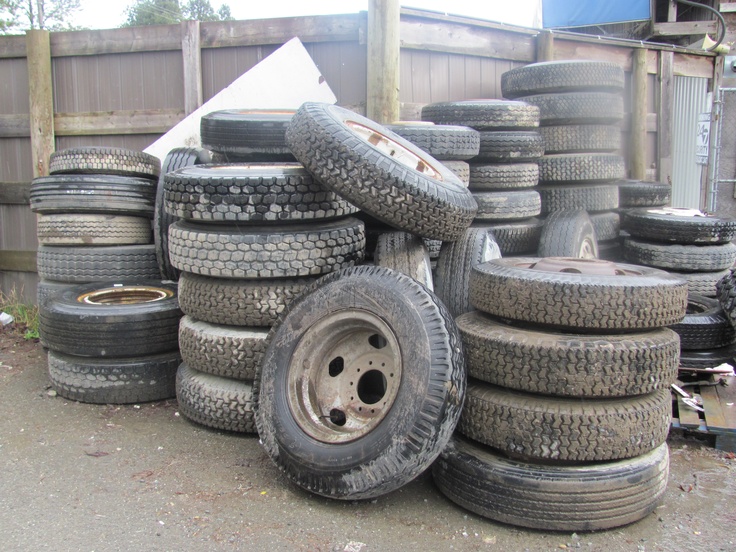 Another important point: with such a decrease in the diameter of the wheels, it is necessary to achieve an acceptable size of the brake mechanisms to ensure effective braking. It is the low profile of the 22.5-inch tires that allows for small diameter wheels and oversized disc brakes compared to those designed for 19.5-inch wheels. In total, Good Year currently produces tires in the Marathon LHS series in eleven sizes.
Another important point: with such a decrease in the diameter of the wheels, it is necessary to achieve an acceptable size of the brake mechanisms to ensure effective braking. It is the low profile of the 22.5-inch tires that allows for small diameter wheels and oversized disc brakes compared to those designed for 19.5-inch wheels. In total, Good Year currently produces tires in the Marathon LHS series in eleven sizes.
While Marathon tires are designed for long-distance hauls, the other brand, Regional, denotes tires designed for medium-haul hauls. Another novelty from Good Year belongs to this family - a wide 17.5-inch low-profile Regional RHD tire designed for driving wheels of vehicles with a gross weight of 7.5 tons. This is one of the models of the new Super Single series.
| Good Year Marathon LHS 385/55R22.5 9 axle steer tire0136 |
These tires are designed to replace traditional dual rear axle wheels with wide single wheels with increased load capacity. A single wheel is more compact than two pairs. It weighs less, which leads to lower unsprung masses. Fewer materials are needed to make one tire than to make two pairs. The reduction in rolling resistance results in measurable fuel savings. Currently, the most common tire size on European vehicles in this class is 215/75R17.5 on both single front and twin rear wheels. The Regional RHD features a brand new 355/45R17.5 size. These tires are designed for an axle load of up to 5.6t. As a kit for the RHD wheels on the rear axle of a truck, Good Year offers tires for the front steer wheels of a closer to the usual, but new for this class of vehicles, size 225 / 70R17.5 with a load on axle up to 3.8 t.
A single wheel is more compact than two pairs. It weighs less, which leads to lower unsprung masses. Fewer materials are needed to make one tire than to make two pairs. The reduction in rolling resistance results in measurable fuel savings. Currently, the most common tire size on European vehicles in this class is 215/75R17.5 on both single front and twin rear wheels. The Regional RHD features a brand new 355/45R17.5 size. These tires are designed for an axle load of up to 5.6t. As a kit for the RHD wheels on the rear axle of a truck, Good Year offers tires for the front steer wheels of a closer to the usual, but new for this class of vehicles, size 225 / 70R17.5 with a load on axle up to 3.8 t.
In addition, Good Year introduced a new series of winter tires for driving wheels of trucks and buses, belonging to the famous Ultra Grip WTD - Winter Traction Drive tire family. According to the manufacturer, the stability and handling of a car equipped with tires of this series on a snowy, icy or wet road is 10% more than a similar car with the “rubber” of the previous G-443 series.
| Good Year Ultra Grip WTS 385/65R22.5 steer axle |
The WTD tires complement the WTS steer tire series introduced in October 2003. The main feature of WTD tires is the 3D-BIS Technology (Block Interlooking System) tread pattern. This term refers to the three-dimensional meshing system of the tread blocks. The WTD tire has a large checkered winter pattern. A large number of tread grooves and thin, high-density trapezium-shaped sipes (sipes that increase traction on ice) have a three-dimensional wave-like shape. The tread pattern with this combination improves the grip of the tire by 10% on snow and by 5% on wet or icy road surfaces. The original shape of the sipes allows the tread blocks to compress into a single unit when the tire is deformed, creating a more stable contact zone. The optimized width and shape of the tread grooves help to avoid stones and other small objects getting stuck in the tire tread.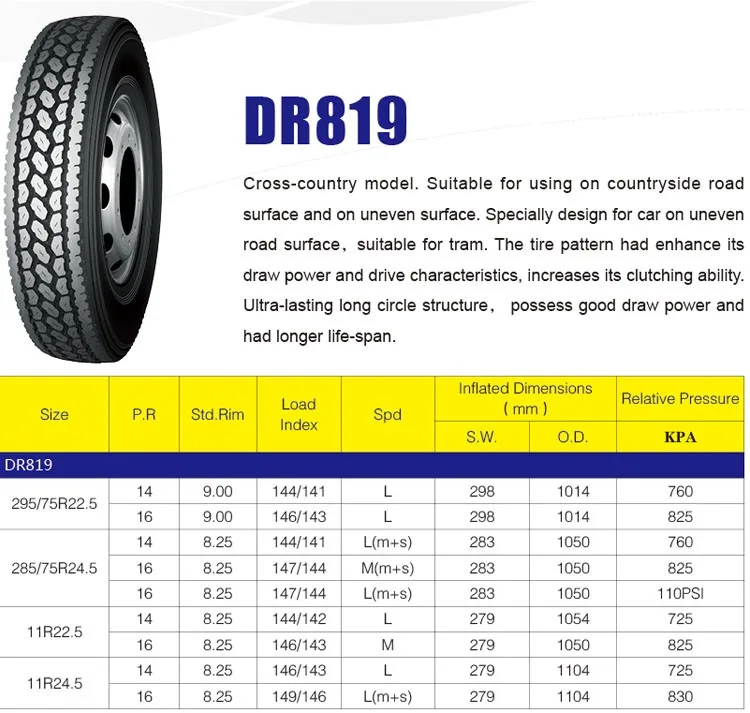 The open shoulder areas improve traction on snow and mud, as well as tire lateral grip. Compared to G-443, the tread wear resistance and damage protection are also improved. WTD tires can be studded and retreaded. This series is marked by a new logo featuring mountains and snowflakes. Tires of the WTD series are produced in the following sizes: 315/80R22.5; 2
The open shoulder areas improve traction on snow and mud, as well as tire lateral grip. Compared to G-443, the tread wear resistance and damage protection are also improved. WTD tires can be studded and retreaded. This series is marked by a new logo featuring mountains and snowflakes. Tires of the WTD series are produced in the following sizes: 315/80R22.5; 2
A new development of the concern in the field of the structure of the tire carcass and a feature of the models of the Greatec series is the Waved-Belt Structure - the wave-like structure of the breaker cord. It is combined with the new Bead structure ply system. In conventional tires, the plies of cord wrap around the bead wire and extend onto the sidewall of the tyre. With Bead Structure tires, one of the carrier plies of the carcass cord is wrapped around the bead wire, so the sidewall of the tire has become more resistant to deformation. Note that the cross section of the bead wire of the tire is not round, but made in the form of a bead.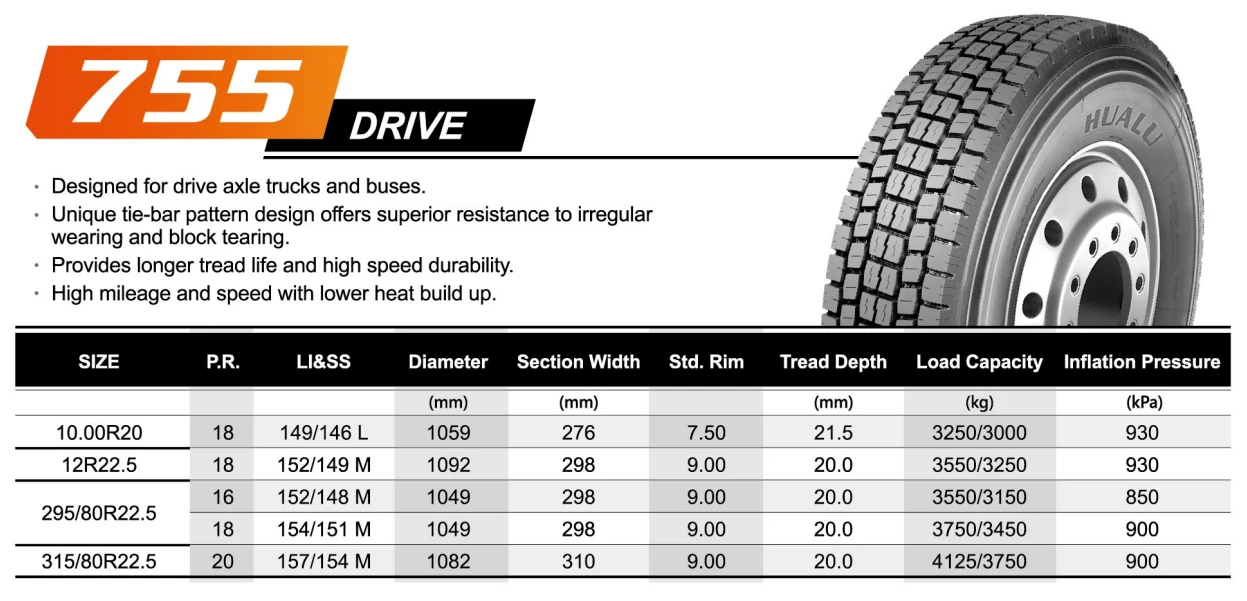 9bar. In the event of a tire puncture, air escapes from the “outer” cavity, and Aircept, due to high internal pressure, almost instantly (in about 0.9 s) swells up and fills the entire inner space of the tire. As a result, a punctured tire automatically converts from tubeless to tube, with a lower internal pressure of about 4 bar that allows you to get to the repair site.
9bar. In the event of a tire puncture, air escapes from the “outer” cavity, and Aircept, due to high internal pressure, almost instantly (in about 0.9 s) swells up and fills the entire inner space of the tire. As a result, a punctured tire automatically converts from tubeless to tube, with a lower internal pressure of about 4 bar that allows you to get to the repair site.
The Bridgestone booth in Hannover also saw the premiere of several tire models. Model M729designed for the drive axle of vehicles operating on long-distance trunk transportation. This is a "narrow" tire of traditional dimensions, designed to work as part of a gable "pair". The M729 has improved agility in both wet and dry conditions.
| Bridgestone M729 GMD Extra Wide Tire |
The shape of the groove separation is intended to make the driver's working environment more comfortable, which reduces the noise level.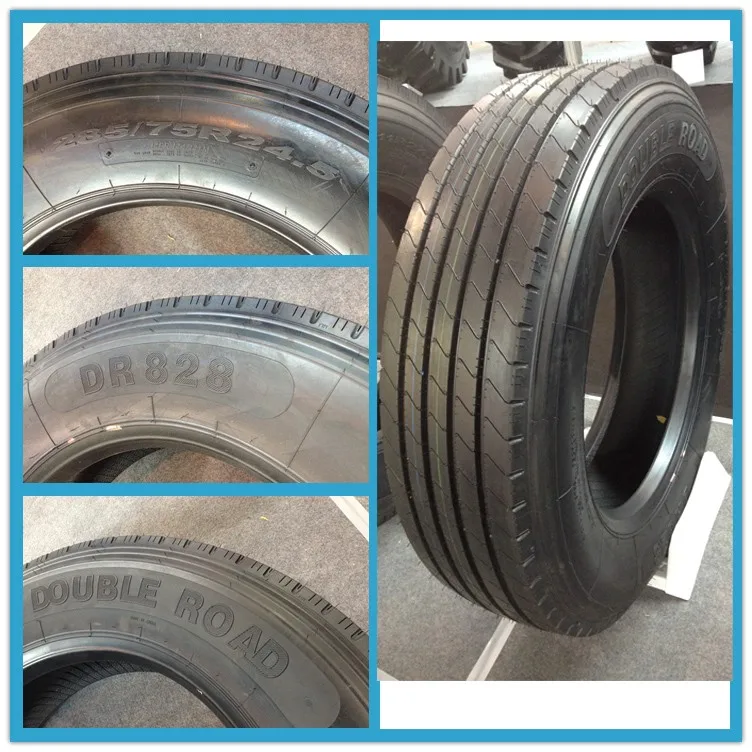 For bus M729GMD has the same tread pattern as the base model M729, but it belongs to the Greatec family - wide tires for single rear wheels. Such tires, for example, are offered as an option for Mercedes Benz Actros semitrailer tractors.
For bus M729GMD has the same tread pattern as the base model M729, but it belongs to the Greatec family - wide tires for single rear wheels. Such tires, for example, are offered as an option for Mercedes Benz Actros semitrailer tractors.
After the brakes of some heavy vehicles were supplemented with retarders, there was a problem of increased tire wear. Another novelty, the M730, is designed for the drive wheels of trucks equipped with such devices. It has increased tread stiffness in areas that have the greatest load when reducing speed. The asymmetrical tread block angle is designed to reduce uneven wear.
The R227 steerable road tire for large and medium trucks is also designed to provide equal stability on dry and wet roads. The tire is engineered to increase durability and ensure even wear. It is produced in 17.5- and 19.5-inch modifications.
| Aircept Crash Chamber Inside Greatec Tire Bridgestone M729 Extra Wide TireGMD |
The new Wide Base Steer steer tire for long haul trucks and tractors opens the new 55th tire series in size 385/55R22.